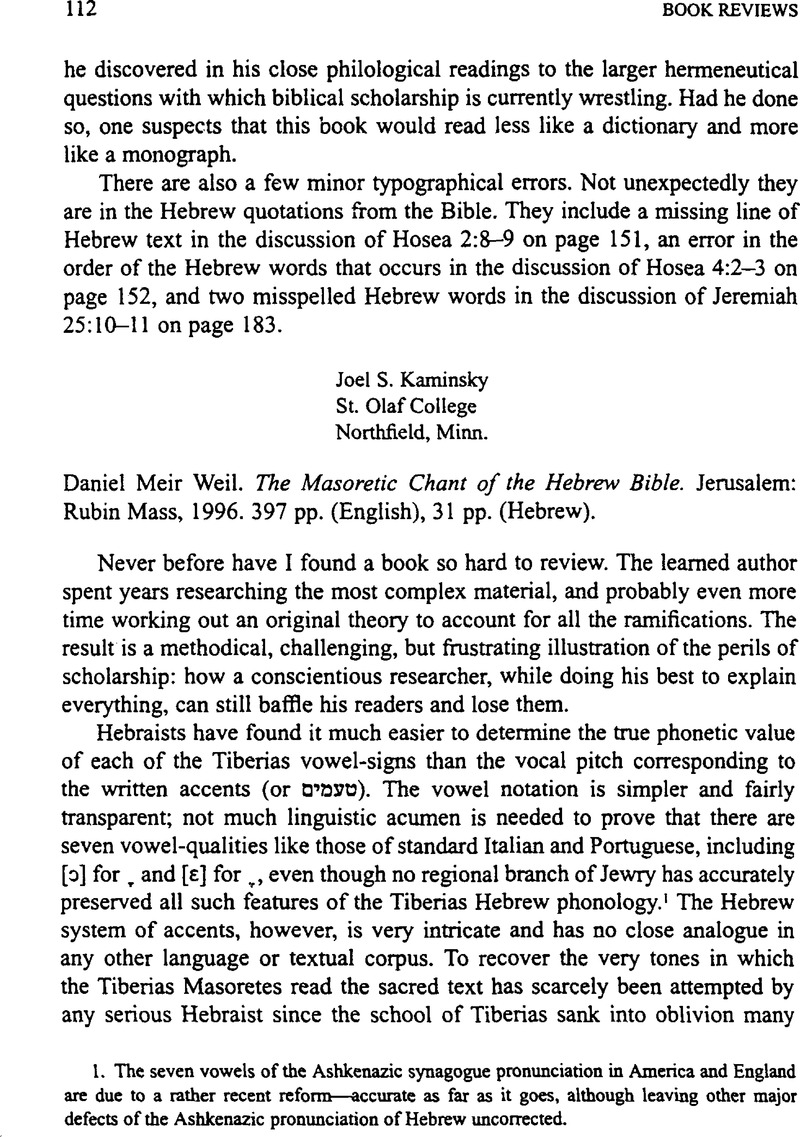No CrossRef data available.
Article contents
Daniel Meir Weil. The Masoretic Chant of the Hebrew Bible.Jerusalem: Rubin Mass, 1996. 397 pp. (English), 31 pp. (Hebrew).
Published online by Cambridge University Press: 15 October 2009
Abstract

- Type
- Book Reviews
- Information
- Copyright
- Copyright © Association for Jewish Studies 1998
References
1. The seven vowels of the Ashkenazic synagogue pronunciation in America and England are due to a rather recent reform-accurate as far as it goes, although leaving other major defects of the Ashkenazic pronunciation of Hebrew uncorrected.
2. A Treatise on the Accentuation of the Twenty-one So-called Prose Books of the Old Testament(Oxford: Clarendon Press, 1887), pp. 71–73.
3. In a brief and quite inadequate footnote (p. 134) Weil remarks, “The substitution merka'→ munahbefore zarqa'(B[reuer] 3.13) falls under the same heading [as the substitution of”, for when one or more unstressed vowels intervene, and for when two or more unstressed vowels intervene].”
4. See my article, “The Traditional Chironomy of the Hebrew Scriptures,” Journal of Biblical Literature 87 (1968): 65–66.




